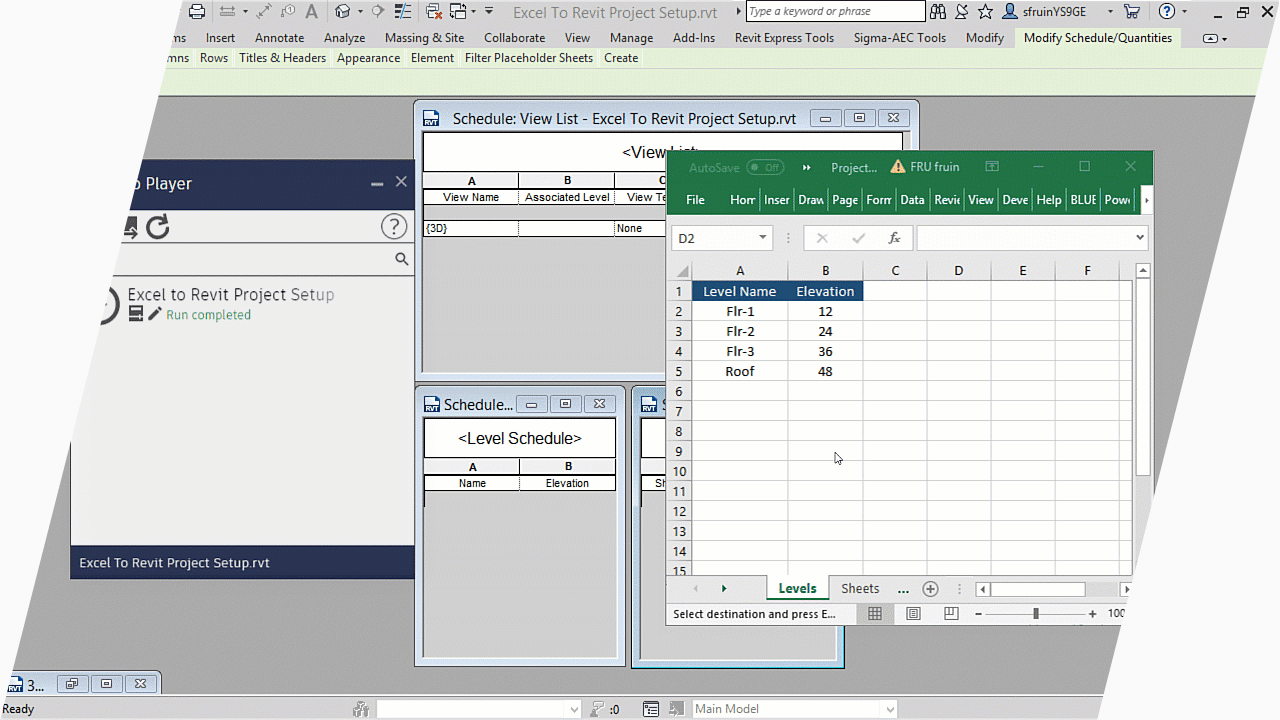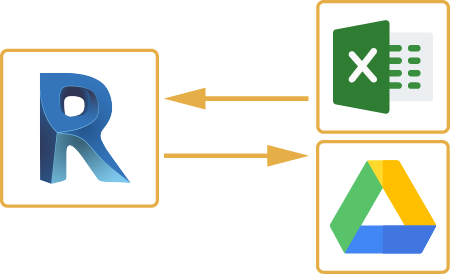Optimize Effectiveness with Top-Rated Revit Plugins
Revit Accelerator: Excel Integration Approaches for Boosting Efficiency and Collaboration
Are you seeking to improve your productivity and partnership while using Revit? Look no more! In this article, we will discover the advantages of incorporating Excel right into your Revit workflows. Discover exactly how you can improve your procedures, optimize partnership, and also learn advanced strategies for enhancing performance. And also, we will certainly share finest practices for seamlessly integrating Excel into your Revit tasks. Prepare yourself to supercharge your Revit experience with our Revit Accelerator: Excel Integration Approaches!
Benefits of Excel Integration in Revit
The advantages of Excel combination in Revit are countless and can significantly boost efficiency and collaboration. By effortlessly attaching these two effective devices, you can streamline your process and save important time. With Excel integration, you can quickly import and export information in between Revit and Excel, permitting you to utilize the toughness of both programs.

One more benefit of Excel combination is the capacity to produce dynamic schedules and records. By linking your Revit version to an Excel spreadsheet, any modifications made in Revit will automatically update in the corresponding Excel file. This makes it easy to create up-to-date routines, amount departures, and other project documents.
Excel assimilation in Revit likewise makes it possible for much better cooperation amongst staff member. With the capacity to import and export information, you can conveniently share information with colleagues who may not have access to Revit. This advertises reliable interaction and enables better sychronisation and decision-making.
Improving Workflows With Revit and Excel
Streamlining process with Revit and Excel can greatly boost efficiency and partnership. By combining the capabilities of Revit and Excel, you can seamlessly move data between the 2 applications, getting rid of the requirement for manual data access and decreasing the threat of mistakes.
Using Revit and Excel with each other permits you to take advantage of the toughness of each program - revit tools. You can export information from Revit into Excel, where you can perform complex calculations, develop graphes and charts, and evaluate the details in an extra effective and well organized way. On the various other hand, you can import data from Excel into Revit, allowing you to swiftly upgrade your designs and documentation based on changes made in Excel
The integration of Revit and Excel likewise promotes partnership among employee. By sharing Excel documents, you can easily team up and interact on style and construction-related information. This improves sychronisation and guarantees that every person is dealing with the most up-to-date info.
Taking Full Advantage Of Partnership With Excel and Revit
To make the most of cooperation with Excel and Revit, you can seamlessly update and share design and construction-related information with your team. By incorporating Excel with Revit, you can get rid of the requirement for hands-on information entrance and reduce the threat of mistakes. With just a couple of clicks, you can import Excel spreadsheets right into your Revit version, enabling you to quickly accessibility and adjust the data. This combination enables you to work together extra successfully with your team, as everyone can service the exact same data in real-time.
Among the key advantages of making use of Excel in conjunction with Revit is the capability to upgrade data in click this site both programs concurrently. Any modifications made in Excel will automatically be shown in Revit, and the other way around. This guarantees that everybody is working with the most up-to-date information, avoiding confusion and saving valuable time.
Additionally, Excel provides powerful tools for visit analyzing and organizing information, which can greatly enhance your collaboration initiatives. You can develop personalized records and graphes in Excel, assisting you to picture and interact essential project information effectively. When providing data to stakeholders or making informed choices based on job metrics (revit add ins)., this can be specifically valuable.
Advanced Methods for Increasing Productivity in Revit Making Use Of Excel
By utilizing innovative methods in Revit, you can significantly enhance your performance by leveraging the power of Excel. With Revit's Excel combination attribute, you can link Excel spreadsheets straight to your Revit model, enabling you to conveniently handle and upgrade information.

Additionally, you can utilize Excel macros to automate recurring tasks in Revit (revit tool). Macros allow you to tape a collection of actions and play them back with a solitary click, conserving you time and effort. For instance, you can develop a macro to automatically create area schedules or update criterion values in bulk.
Finest Practices for Excel Assimilation in Revit
Using Excel as a data administration tool in Revit permits reliable monitoring and upgrading of information. By incorporating Excel into your Revit workflow, you can streamline your processes and improve efficiency. One of the very best methods for Excel combination in Revit is to develop a clear and arranged information structure. This indicates making your Excel spread sheets with columns and rows that align with the parameters and classifications in your Revit job. By doing so, you can conveniently import and export information in between Revit and Excel with no complication. One more finest practice is to use formulas and functions in Excel to automate computations and information control. This can save you time and make sure accuracy in your data monitoring. In addition, it is essential to regularly upgrade your Excel spread sheets and sync them with your Revit job. In this manner, any adjustments made Homepage in Revit will certainly be mirrored in your Excel documents, and the other way around. By adhering to these finest methods, you can successfully use Excel as a data administration device in Revit and improve your efficiency and collaboration.
Verdict
To conclude, integrating Excel with Revit can significantly boost productivity and cooperation in the style procedure. By maximizing and simplifying workflows cooperation, teams can work more effectively and effectively. Advanced methods, such as making use of Excel formulas and macros, can further enhance productivity in Revit. Nevertheless, it is very important to comply with ideal techniques to guarantee smooth assimilation and avoid any prospective concerns. By leveraging the power of Excel, Revit users can achieve higher degrees of performance and collaboration in their projects.
With Excel integration, you can easily import and export data between Revit and Excel, permitting you to take advantage of the staminas of both programs.
One of the essential benefits of Excel assimilation is the ability to use Excel solutions and features within Revit. By connecting your Revit version to an Excel spread sheet, any type of modifications made in Revit will immediately update in the corresponding Excel documents. On the various other hand, you can import data from Excel into Revit, enabling you to promptly upgrade your designs and paperwork based on changes made in Excel.
With Revit's Excel integration attribute, you can connect Excel spreadsheets straight to your Revit version, enabling you to easily manage and upgrade data.